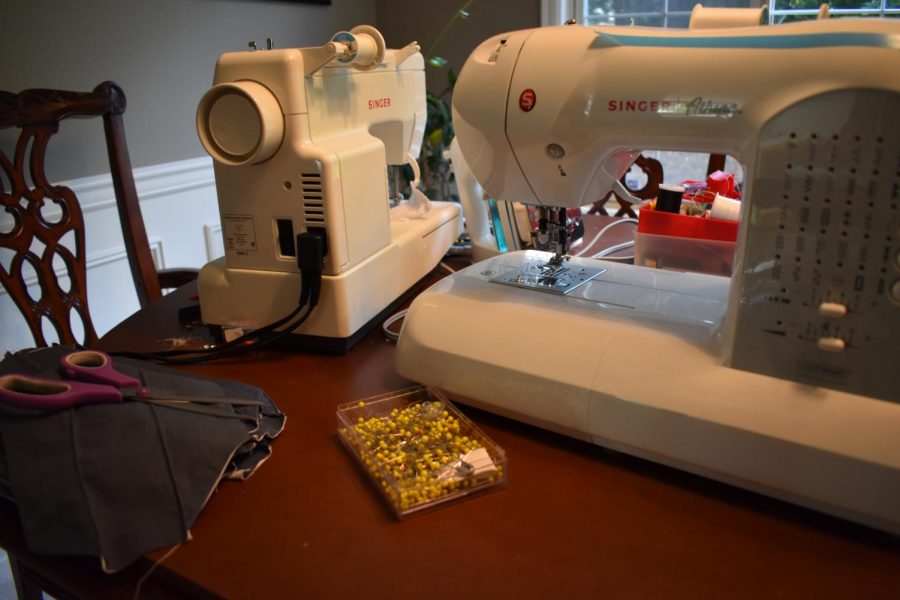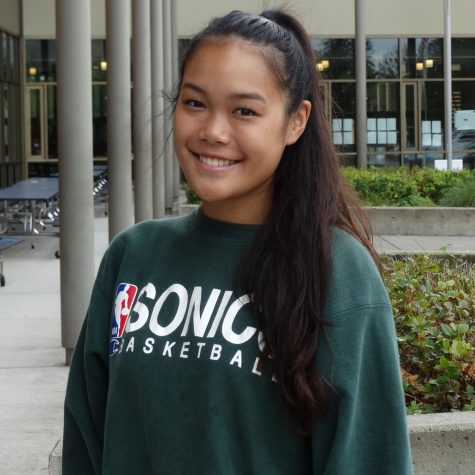Staying Stylish and Sustainable
October 12, 2020
Clothing and fashion have become a vital part for one’s self-expression, especially amongst teens today; whether you wear vintage, comfortable, or high fashion, it expresses who you are because you choose to wear it. However, the latest trends and styles have become increasingly costly as demand has grown, and a tank top or pair of pants can cost $50. The influx of money spent on trendy clothing items has caused target audiences to refrain from buying the clothing because they are not willing to pay the price. This has caused a new type of merchandising to erupt: fast fashion. However, though large fast fashion companies produce trendy clothes for low prices, the effects they have on the environment and the creators of the styles are detrimental.
With the growing investment consumers have put into fast fashion, more press has surrounded the industry. Through various studies and observations of these companies, it has become more clear as to how the clothing is created and the kind of conditions workers endure. According to Green America, due to high production targets: “Overburdened workers are often subjected to forced overtime or through breaks with little to no pay.” The conditions fast fashion workers are forced to work in, along with the detrimental effects on the environment, such as the chemicals released through production, have inspired many people to fight against this industry.
Freshman designers Kayla Wong and Claire Robinson founded EcoThreads, which promotes eco-friendly fashion and educates buyers on the effects of fast fashion. Their motivation for creating this company was not only based on their love for designing but how there are not a lot of sustainable options for teenagers. Their goal for creating EcoThreads was to provide an outlet for people who want to reduce their carbon footprint when buying clothing and become more informed about the detrimental effects of clothing that is not sustainable. The main focus is to target teens because, as Wong and Robinson state, they want to raise awareness about environmental issues by “creating conscious consumers.” Furthermore, they argue that while sustainable clothing is more pricey, it lasts longer. Through buying clothes that are sustainable, a consumer knows that not only will they reduce their carbon footprint but also will receive clothes that are better quality.Wong and Robinson focus on “making something versatile that will flatter everyone” so their buyers can make a lot of use out of their clothing.
Like the EcoThreads founders, junior Kaitlyn Smith enjoys creating and altering her clothing and though sustainability is important to her, it is not her main focus. Rather, her reason for creating fashion is to promote self-expression through styles. Smith states, “I realized fashion is really a passion of mine and it is fun to express yourself in this way.” Through creating her clothing and putting together outfits, not only is Smith able to create her own styles and express herself, but she also remains eco-friendly. Her individuality promotes being conscious of the environment and spending money on clothing that she supports. Senior Paige Bromberg agrees with Smith’s stance on creating fashion as she is “super passionate about the idea that you should dress how you want and with things that really speak to you.” Bromberg’s dedication to remaining true to her personal style allows for her clothing to express who she is, and also keeps her fashion sustainable like all of the designers mentioned. Through creation of clothing, creators can reduce how much they buy fast fashion and find a way to incorporate what they love into helping the environment.
Given all of this information about how the people around you are remaining sustainable, you might be wondering how you can contribute to this movement. If you like creating fashion, you can buy from deadstock companies like the founders of EcoThreads do or you can use old clothing and fabric from things you do not use anymore. By reusing and upcycling clothing, you will be reducing your carbon footprint and not contributing to fast fashion companies. Not only will you be creating individual pieces but honing a new skill. Fashion and Merchandising teacher Shelby Greget explains that her motivation is not only to teach kids how to create fashion but also “ sending kids away with life skills.” You can utilize the dedication to creating a clothing item in any aspect of life.
However, creating fashion is not for everyone, and places like Value Village have racks of clothing that are from popular designers. You can find fashionable styles while remaining sustainable through buying second-hand clothing.
Thrifting and shopping at Goodwill is a great way to start getting into sustainable fashion but if you would rather buy new clothing, try shopping at Bluesign-certified stores. Bluesign-certified companies focus on ensuring that companies use less resources to reduce environmental impact, creating good conditions for workers, and ensuring that chemicals that are produced during the creation of the styles are handled safely. Patagonia, Adidas, Brooks, and Outerknown are examples of Bluesign-certified companies.
With all this knowledge, it is important to remember that you can keep your personal style while remaining sustainable. Clothing is part of how people express their identity so do not be afraid to wear something you like. As Bromberg states, “You can’t do everything to please other people; you have to do something for yourself.”



